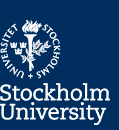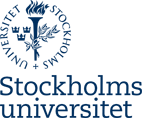What is your dissertation about?

The critical issue investigated in the comparative case study is why and how established hegemonic roles changed because of the catalytic role of adult literacy. The research was conducted in Bhilwara District, Rajasthan and Howrah District, West Bengal, India where literacy has played an intrinsic role in transforming the lives of the rural and marginalized women. In Indian society social norms often prevent women from exercising their free choice and from taking full and equal advantage of opportunities for individual development, contribution and reward. So assessing empowerment/transformation would mean identifying the constraints to empowerment, how women’s agency has developed and finally looking if ‘agency’ was able to address the constraints to women’s access to adult literacy.
How was the study conducted?
The researcher involved the key stakeholders in the community to gain access to the informants. It must be kept in mind that villages in India are very close communities and accessible if members of the civil society are equally involved in the process. The main purpose of the comparative case study is to illustrate the uniqueness of the regional location studied simultaneously pointing out their similarities and differences. The locational comparisons draws out the diversity of the regions, socio-economic context, impact of adult literacy on rural women and the emerging opportunities. Since the study has a gender focus and centers on marginalized women and girls belonging to the rural community the interview guide was designed to cover three aspects: Gender Relations, Non-Formal Education/Learning and Transformation/Empowerment. The research instruments applied were semi-structured interviews, focus group discussions and audio recording and transcribing from the regional languages into English.
What are the key results of your study?

Exposure to literacy classes gave women an opportunity to share, discuss and take control of their lives, literacy lead to economic empowerment by which mothers were able to take decisions for their children, educate their daughters and participate in household decision making. It increased their status among family members and women were able to influence the community by speaking up against domestic violence, early marriage and the benefits of literacy. Although literacy is noted as the vehicle of transformation it has yet to eradicate customs and traditions that are regressive and disempower women. Customs such as child marriage is still prevalent in rural areas as cited in the interviews. Ending child marriage requires work not only against all sections of the community but also concerted effort towards improving the socio-economic conditions of rural and marginalized women.
Is there something else you would like to add? Something that surprised you?
Caste and class affiliation did not play a vital role in the social groups. Women identified themselves and bonded together on the basis of their socio-economic background. The common denominator that created the groups was that they were the poorest of the poor and often the unreached. The social groups gave them a platform to voice their difficulties and work together for a better future.
PhD defence
The PhD defence takes place on April 4
Read more
Dissertation and abstract in DiVA klick here



